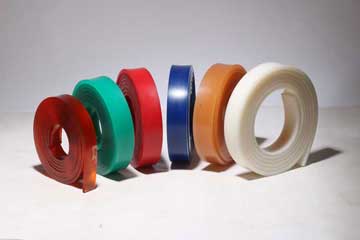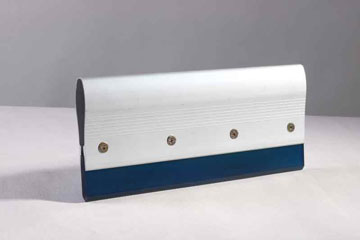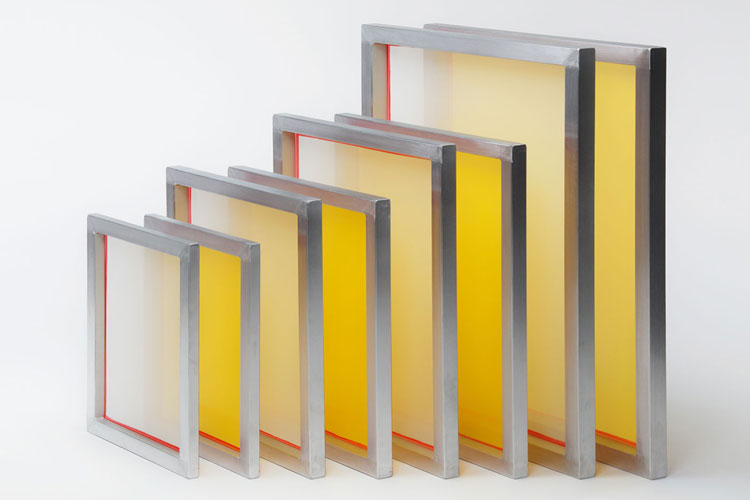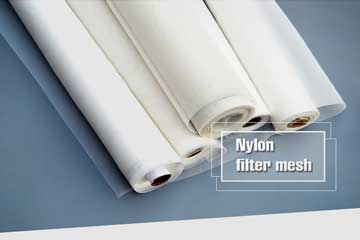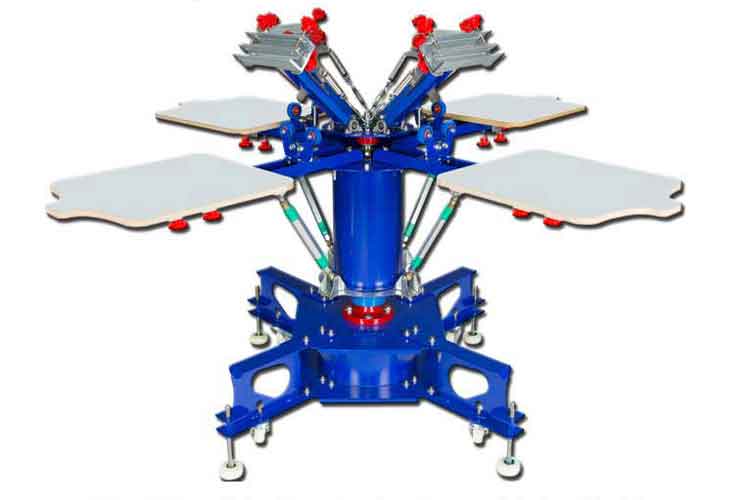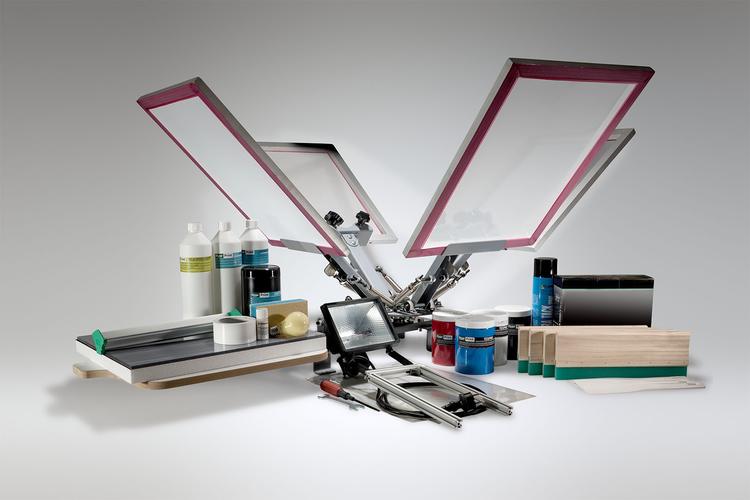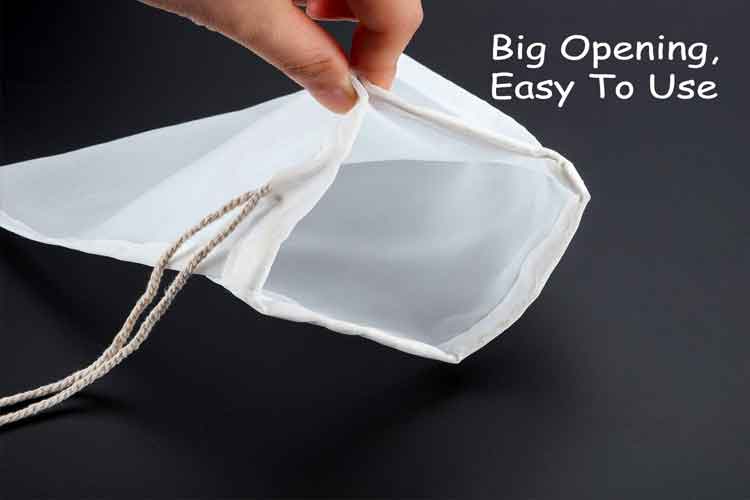The Ultimate Guide to Screen Printing Mesh: Choosing the Right Mesh for Your Projects
Introduction Screen printing is a dynamic and widely used printing technique that allows for the transfer of vibrant designs onto a variety of surfaces, including fabrics, paper, plastic, and metal. At the heart of this process lies one of the most crIntroduction
Screen printing is a dynamic and widely used printing technique that allows for the transfer of vibrant designs onto a variety of surfaces, including fabrics, paper, plastic, and metal. At the heart of this process lies one of the most critical components: the screen printing mesh. This mesh serves as a filter that controls the flow of ink, ultimately determining the quality, detail, and precision of the printed image.
The choice of screen printing mesh can significantly impact the outcome of your projects. With a variety of mesh types, counts, and materials available, understanding the characteristics and applications of each is essential for achieving the best results. Whether you're a seasoned screen printer, a small business owner, or an artist exploring new mediums, selecting the appropriate mesh can enhance your work and streamline your printing process.
In this comprehensive guide, we will explore everything you need to know about screen printing mesh. We will delve into the different types of mesh, their specifications, and the advantages of each. We will also discuss how to choose the best mesh for your specific printing needs, providing you with the knowledge to make informed decisions.
From the basics of mesh counts and materials to the latest products on the market, this guide aims to equip you with the insights necessary for successful screen printing. Join us as we uncover the essential elements of screen printing mesh and discover how to elevate your printing projects to new heights. Whether you’re looking for the best mesh for T-shirt printing, specialty inks, or printing on unusual surfaces, we have you covered.
Let’s dive into the world of screen printing mesh and unlock the potential it holds for your creative endeavors!
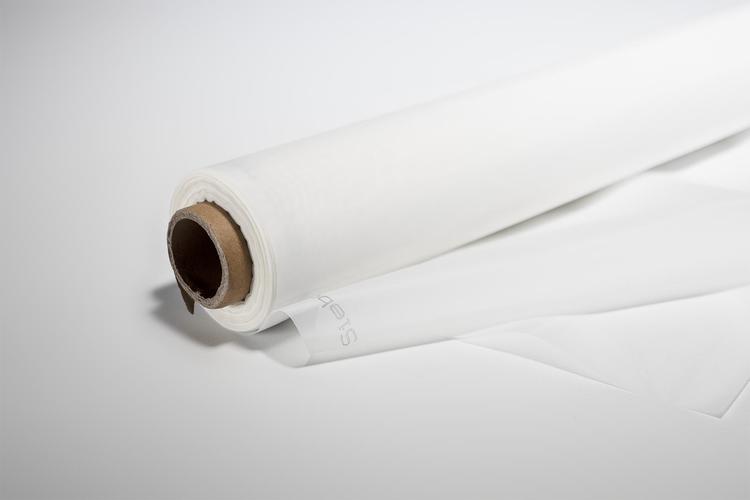
1. Understanding Screen Printing Mesh
Screen printing mesh is an essential component of the screen printing process, functioning as a medium through which ink is transferred onto the substrate. Its properties directly affect the quality of the print, including detail, color vibrancy, and ink flow. In this section, we will explore what screen printing mesh is, its composition, how it works, and the factors that influence its performance.
1.1 What is Screen Printing Mesh?
Screen printing mesh consists of a thin fabric, typically made from polyester or nylon, stretched tightly over a frame. The mesh has thousands of tiny openings that allow ink to pass through while retaining the design's detail. The size of these openings and the mesh's construction are critical for determining how well it can filter ink during the printing process.
1.2 Composition of Screen Printing Mesh
The most common materials used for screen printing mesh include:
-
Polyester: This is the preferred material for most screen printing applications due to its durability, resistance to chemicals, and ability to maintain tension. Polyester mesh is available in various counts and thicknesses, making it suitable for a wide range of printing needs.
-
Nylon: While less common than polyester, nylon mesh is known for its flexibility and strength. It is often used for specific applications where a softer touch or more intricate detail is required.
-
Monofilament vs. Multifilament: Mesh can be constructed from monofilament (a single thread) or multifilament (multiple threads twisted together). Monofilament mesh typically offers higher precision and a smoother surface, making it ideal for fine details, while multifilament mesh may provide better ink flow.
1.3 How Does Screen Printing Mesh Work?
The screen printing process involves several steps:
-
Preparation: The mesh is first coated with a light-sensitive emulsion and then exposed to UV light with a stencil of the desired design. This process creates a negative image on the screen.
-
Inking: Once the screen is prepared, ink is applied to the top of the mesh. A squeegee is then used to push the ink across the screen, forcing it through the open areas of the mesh onto the substrate below.
-
Printing: The ink passes through the mesh openings where the emulsion was washed away, creating the printed design on the substrate. The size of the mesh openings and the mesh count determine the amount of ink transferred.
-
Curing: After printing, the ink must be cured or dried to ensure it adheres properly to the substrate.
1.4 Factors Influencing Mesh Performance
Several factors affect the performance of screen printing mesh:
-
Mesh Count: This refers to the number of threads per inch in the mesh. Higher mesh counts (e.g., 230 mesh) allow for finer details and are ideal for printing intricate designs, while lower mesh counts (e.g., 110 mesh) are better for thicker inks and bolder prints.
-
Thread Diameter: The thickness of the threads used in the mesh impacts its strength and ink flow. Thicker threads can provide more durability, while thinner threads allow for finer detail.
-
Tension: The tension at which the mesh is stretched over the frame is crucial for maintaining print accuracy and consistency. Properly tensioned mesh reduces the likelihood of distortion during printing.
-
Ink Type: Different types of inks (plastisol, water-based, etc.) require different mesh counts for optimal transfer. Understanding the ink’s viscosity and drying properties is essential for selecting the right mesh.
1.5 Conclusion
Understanding screen printing mesh is fundamental for anyone looking to excel in screen printing. The choice of material, mesh count, and other factors can significantly influence the quality of your prints. Whether you are producing custom T-shirts, posters, or promotional materials, knowing how to select and use the right mesh will ensure that your designs are vibrant and accurately reproduced.
In the following sections, we will explore the various types of screen printing mesh, delve deeper into mesh counts and their specific applications, and offer practical tips for selecting the best mesh for your projects. Whether you’re a beginner or an experienced printer, this guide will provide valuable insights to enhance your screen printing endeavors.
2. Mesh Count and Its Importance
Mesh count is a critical factor in screen printing that directly influences the quality and outcome of the printed design. It refers to the number of threads per inch in the mesh, which determines the size of the openings through which the ink flows. Understanding mesh count is essential for selecting the right screen for your specific printing needs, whether you’re working with textiles, paper, or other substrates.
2.1 What is Mesh Count?
Mesh count is typically expressed as a numerical value, indicating how many threads are woven into each square inch of the mesh. For example, a screen with a mesh count of 110 has 110 threads per inch in both directions, resulting in larger openings compared to a screen with a mesh count of 230.
2.2 How Mesh Count Affects Printing
The mesh count plays a vital role in several aspects of the screen printing process:
-
Ink Flow: A lower mesh count allows more ink to pass through, which is beneficial for bold, saturated prints. Conversely, higher mesh counts restrict ink flow, making them suitable for fine details and delicate designs.
-
Print Detail: Higher mesh counts are ideal for intricate artwork and halftone printing, as they can capture finer details. A mesh count of 230 or higher is often used for fine lines, small text, and detailed graphics.
-
Ink Type Compatibility: Different inks require different mesh counts for optimal performance. For example, plastisol inks, which are thicker, typically work well with lower mesh counts (110 to 160). Water-based inks, which are thinner, may require higher mesh counts (200 to 305) to ensure proper transfer without bleeding.
2.3 Common Mesh Counts and Their Applications
Here’s a breakdown of common mesh counts and their typical uses:
-
110 Mesh: Ideal for printing thicker inks and larger designs. Commonly used for T-shirts and posters where bold colors are desired.
-
156 Mesh: A versatile choice, suitable for both plastisol and water-based inks. Good for general printing and moderate detail.
-
160 Mesh: Works well for most applications, providing a balance between detail and ink flow. Suitable for a wide range of printing tasks.
-
200 Mesh: Best for finer detail and smaller images. Often used for high-quality graphics, halftone prints, and fine text.
-
230 Mesh: Excellent for printing fine details and halftones. Ideal for detailed designs and photographic images.
-
305 Mesh: Used for very fine details and specialty inks. Perfect for printing intricate designs or high-resolution images.
2.4 Choosing the Right Mesh Count
Selecting the appropriate mesh count depends on several factors:
-
Design Complexity: For simple designs with bold colors, lower mesh counts are often sufficient. For intricate artwork with fine details, opt for higher mesh counts.
-
Ink Type: Always consider the type of ink you are using. Thicker inks require lower mesh counts, while thinner inks perform better with higher counts.
-
Substrate Type: Different materials may absorb ink differently, affecting the required mesh count. For example, printing on fabric may require different counts than printing on paper or plastic.
-
Production Speed: If you need to produce a large volume of prints quickly, a lower mesh count may allow for faster ink transfer, but this might sacrifice detail.
2.5 Conclusion
Understanding mesh count is essential for achieving the desired quality in your screen printing projects. By selecting the right mesh count based on your design requirements, ink type, and substrate, you can enhance the vibrancy, detail, and overall appearance of your prints. In the next section, we will delve deeper into the specific types of screen printing mesh available on the market and their unique characteristics. Whether you’re a beginner or a seasoned pro, knowing how to navigate mesh counts will greatly improve your printing results.
3. Selecting the Best Mesh for Your Needs
Choosing the right screen printing mesh is crucial for achieving optimal results in your printing projects. The ideal mesh will depend on various factors, including the type of ink being used, the substrate, the design complexity, and your specific printing goals. This section will guide you through the process of selecting the best mesh for your needs, offering insights into the different types of mesh, their applications, and practical tips for making informed decisions.
3.1 Consider Your Printing Application
Before selecting a mesh, it's essential to understand the specific application you are working on. Different projects may require different mesh types and counts:
-
Textile Printing: If you're printing on T-shirts or other fabrics, consider using a mesh count between 110 and 160. This range is ideal for plastisol inks, which are commonly used in textile printing.
-
Graphic and Detail Work: For detailed graphics, logos, or photographs, opt for higher mesh counts, such as 200 to 305. These counts allow for finer details and smoother gradients.
-
Packaging and Labels: If you are printing on packaging materials or labels, a mesh count of 120 to 160 is often suitable, depending on the ink type and desired finish.
3.2 Matching Mesh Count with Ink Type
The type of ink you choose will greatly influence the mesh count you should select:
-
Plastisol Inks: These inks are thick and require lower mesh counts for effective transfer. A count of 110 to 160 is typically recommended.
-
Water-Based Inks: These inks are thinner and require higher mesh counts to prevent bleeding and ensure fine detail. Counts of 200 to 305 are often best for these applications.
-
Specialty Inks: For specialty inks such as metallics, glitters, or discharge inks, consult the ink manufacturer’s guidelines for recommended mesh counts.
3.3 Assessing Design Complexity
The complexity of your design is another crucial factor in mesh selection:
-
Simple Designs: For bold designs with solid colors, a lower mesh count (110 to 156) will allow for adequate ink flow and saturation.
-
Intricate Designs: If your design includes fine lines, small text, or intricate details, a higher mesh count (200 to 305) is necessary to capture the detail without ink bleed.
3.4 Evaluating Substrate Compatibility
Different substrates absorb ink differently, which can affect the mesh count needed:
-
Fabrics: For textiles, the absorbency of the material can dictate the mesh choice. For example, cotton may require different mesh counts compared to polyester blends.
-
Paper and Cardstock: These materials often work well with a wider range of mesh counts, typically between 120 and 200, depending on the ink and design.
-
Plastic and Metal: For non-porous surfaces, such as plastic or metal, higher mesh counts (200 and above) are often needed to achieve crisp details.
3.5 Practical Tips for Mesh Selection
Here are some practical tips to consider when selecting the best mesh for your projects:
-
Experimentation: Don’t hesitate to experiment with different mesh counts for various designs and substrates. This trial-and-error approach can help you find the optimal setup for your specific needs.
-
Consult Manufacturer Recommendations: Many ink manufacturers provide guidelines on which mesh counts work best with their products. Always refer to these recommendations when in doubt.
-
Invest in Quality Mesh: High-quality mesh will perform better and last longer than cheaper alternatives. Investing in quality materials can improve your printing results and reduce the frequency of screen replacements.
-
Keep Your Goals in Mind: Always align your mesh selection with your overall project goals, whether it’s quality, speed, or cost-effectiveness. Balancing these factors will help you achieve the best outcome.
3.6 Conclusion
Selecting the best screen printing mesh for your needs is a multi-faceted process that requires careful consideration of various factors, including your application, ink type, design complexity, and substrate compatibility. By understanding these elements and following the practical tips outlined above, you can make informed decisions that enhance your screen printing results.
In the next section, we will explore the most popular types of screen printing mesh available in the market, highlighting their unique characteristics and best uses to further assist you in your selection process.
4. Popular Screen Printing Mesh Products
When it comes to screen printing, selecting the right mesh can significantly impact the quality and efficiency of your prints. With a wide range of products available on the market, it's essential to understand which options are best suited for your specific printing needs. In this section, we will highlight some of the most popular screen printing mesh products, their specifications, and their applications to help you make informed choices.
4.1 Aluminum Screen Printing Frames
Aluminum frames are a popular choice among screen printers due to their durability and lightweight design. They provide excellent tension and are easy to handle. Here are a couple of widely used sizes:
-
20x24 Aluminum Screens: This size is commonly used for T-shirt printing and general applications. The sturdy construction allows for consistent tension, which is crucial for achieving high-quality prints.
-
23x31 Aluminum Screens: Another standard size, ideal for larger prints or multiple designs on one screen. These frames are versatile and suitable for various printing tasks.
4.2 Pre-Stretched Screen Printing Frames
Pre-stretched screens are ready to use right out of the box, saving time and ensuring consistent tension. This is particularly beneficial for professional printers who need reliability in their setups. Some popular options include:
- Pre-Stretched Polyester Mesh Screens: Available in various mesh counts, these screens are designed for optimal tension and durability, making them ideal for both plastisol and water-based inks.
4.3 Specialty Mesh Products
Certain projects may require specific types of mesh to achieve the desired results. Here are some specialty mesh products:
-
Riso Screen Master 70 Mesh: This product is specifically designed for Riso printing applications. Its unique mesh structure allows for vibrant color reproduction and high detail.
-
Sefar Screen Printing Mesh: Known for its high quality, Sefar mesh is available in various counts and materials, making it suitable for a wide range of printing applications, from textiles to industrial uses.
-
Thermal Screen Printing Mesh: This type of mesh is designed to withstand higher temperatures, making it ideal for specialty applications involving heat-sensitive inks or substrates.
4.4 Popular Mesh Counts for Different Applications
Understanding the most popular mesh counts can help you choose the right product for your specific needs:
-
110 Mesh: Great for printing bold, solid designs, especially on fabric. Ideal for T-shirts using plastisol inks.
-
156 Mesh: A versatile choice that works well for both detailed and bold designs. Suitable for a variety of applications.
-
160 Mesh: Often used for general printing, this mesh count strikes a balance between detail and ink flow, making it suitable for many projects.
-
200 Mesh: Recommended for fine detail work, including halftones and intricate graphics. Ideal for high-quality prints.
-
305 Mesh: Best for ultra-fine detail and specialty inks. This mesh count is typically used in high-resolution printing.
4.5 Buying Considerations
When selecting screen printing mesh products, consider the following:
-
Quality: Opt for high-quality mesh materials that provide consistent performance and durability.
-
Compatibility: Ensure that the mesh count and material are compatible with the ink types and substrates you plan to use.
-
Cost: While it’s important to stay within budget, remember that investing in quality mesh can lead to better results and less frequent replacements.
-
Supplier Reputation: Purchase from reputable suppliers known for their quality products and customer service.
4.6 Conclusion
Choosing the right screen printing mesh product is essential for achieving excellent results in your printing projects. By understanding the various types of mesh, their specifications, and their applications, you can make informed decisions that enhance your printing efficiency and quality. In the next section, we will provide tips on how to effectively use and maintain your screen printing mesh to maximize its lifespan and performance.
5. Tips for Screen Printing on Different Surfaces
Screen printing is a versatile technique that can be applied to various surfaces, each requiring different approaches and considerations to achieve optimal results. Whether you’re printing on fabric, paper, plastic, or metal, understanding the unique characteristics of each substrate is essential for successful screen printing. In this section, we will provide valuable tips for screen printing on different surfaces to help you adapt your techniques and ensure high-quality prints.
5.1 Screen Printing on Fabric
Printing on textiles, such as T-shirts and apparel, is one of the most common applications for screen printing. Here are some tips to consider:
-
Choose the Right Ink: Use plastisol inks for vibrant, long-lasting prints on cotton and cotton blends. For a softer feel, consider water-based inks, which penetrate the fabric fibers.
-
Select Appropriate Mesh Count: For bold designs, use a lower mesh count (110 to 156). For fine details, opt for higher counts (200 to 305).
-
Pre-Treat Fabrics: If using water-based inks, pre-treat the fabric with a suitable solution to improve ink adhesion and prevent bleeding.
-
Curing Process: Ensure proper curing of the ink according to the manufacturer's recommendations. Use a heat press or conveyor dryer to achieve the desired results.
5.2 Screen Printing on Paper
Screen printing on paper is often used for posters, cards, and other graphic applications. Consider the following tips:
-
Ink Selection: Use water-based or solvent-based inks specifically designed for paper. These inks provide good adhesion and vibrant colors.
-
Mesh Count Matters: A mesh count of 120 to 200 is typically suitable for paper printing. Higher counts may be used for detailed designs.
-
Paper Type: Choose a paper that is compatible with your ink. For example, coated papers may require different inks than uncoated ones.
-
Drying Techniques: Allow adequate drying time between layers to prevent smudging. Consider using a dryer specifically designed for paper applications.
5.3 Screen Printing on Plastic
Printing on plastic materials requires special attention due to their unique surface properties. Here are some tips:
-
Surface Preparation: Clean the plastic surface thoroughly to remove dust, oils, or residues. A surface treatment, such as corona or flame treatment, can improve ink adhesion.
-
Ink Compatibility: Use inks specifically formulated for plastics, such as solvent-based inks or UV-curable inks, to ensure proper adhesion and durability.
-
Mesh Selection: A higher mesh count (200 to 305) is often needed for plastic substrates to achieve finer detail and prevent ink pooling.
-
Test Prints: Always conduct test prints on scrap pieces of plastic before committing to the final product to ensure the desired outcome.
5.4 Screen Printing on Metal
Screen printing on metal surfaces can create striking designs, especially for signage and promotional materials. Follow these tips:
-
Surface Treatment: Ensure the metal surface is clean and free from oxidation or coatings. Sandblasting or using a primer can enhance adhesion.
-
Use Appropriate Inks: Specialty inks formulated for metal surfaces, such as epoxy or enamel inks, will provide better adhesion and durability.
-
Mesh Count Consideration: A mesh count of 200 or higher may be necessary for achieving crisp details on metal.
-
Curing Methods: Some metal inks require heat curing, so be sure to follow the manufacturer's guidelines to achieve optimal results.
5.5 General Tips for All Surfaces
Regardless of the surface you’re printing on, consider the following general tips:
-
Conduct Test Prints: Always perform test prints to evaluate how the ink interacts with the substrate. This helps in fine-tuning your approach before full production.
-
Monitor Environmental Conditions: Humidity and temperature can affect ink drying and curing. Maintain consistent conditions in your printing area.
-
Adjust Squeegee Pressure: The pressure applied during printing can influence ink transfer. Experiment with different pressures to find what works best for your specific application.
-
Clean Screens Regularly: Keeping your screens clean and well-maintained will enhance print quality and prolong the life of your mesh.
5.6 Conclusion
Screen printing on different surfaces requires a tailored approach to ensure high-quality prints. By understanding the unique properties of each substrate and following the tips provided in this section, you can achieve successful results across a variety of applications. In the next section, we will discuss maintenance and care for your screen printing equipment to maximize its performance and lifespan.
6. Maintenance and Care for Screen Printing Mesh
Proper maintenance and care for your screen printing mesh are essential to ensure longevity, consistent performance, and high-quality prints. A well-maintained mesh not only improves print results but also reduces the frequency of replacements, saving you time and money. In this section, we’ll explore best practices for cleaning, storing, and maintaining your screen printing mesh.
6.1 Cleaning Your Screen Printing Mesh
Regular cleaning of your mesh is crucial for preventing ink buildup and ensuring optimal ink flow. Follow these steps for effective cleaning:
-
Immediate Cleaning: Clean your screens immediately after printing. Dried ink is much harder to remove and can damage the mesh.
-
Use Appropriate Cleaning Solutions: Choose a cleaning solution compatible with the type of ink used. For plastisol inks, use a solvent-based cleaner. For water-based inks, warm water and mild soap are usually sufficient.
-
Gentle Scrubbing: Use a soft brush or sponge to gently scrub the mesh. Avoid using abrasive materials that can damage the fibers.
-
Rinse Thoroughly: Rinse the screen thoroughly with water to remove all cleaning solution and ink residues. Ensure no leftover chemicals can affect future prints.
-
Drying: Allow the screen to air dry completely before storing. Place it in a clean, dry area away from direct sunlight.
6.2 Storing Screen Printing Mesh
Proper storage of your screens is vital to maintaining their integrity and functionality. Consider the following tips:
-
Flat Storage: Store screens flat to prevent warping. If you have to stack them, place a protective layer between each screen to avoid pressure on the mesh.
-
Vertical Storage: If space is limited, screens can be stored vertically in a dedicated rack, ensuring they are not leaning against each other to prevent damage.
-
Avoid Humidity: Store screens in a climate-controlled environment with low humidity to prevent mold and deterioration of the mesh.
-
Protect from Dust: Keep screens covered or in a dust-free environment to prevent debris from accumulating on the mesh.
6.3 Inspecting Mesh Regularly
Regular inspections can help you identify potential issues before they become major problems:
-
Check for Holes and Tears: Look for any signs of wear, such as holes, tears, or fraying in the mesh. Early detection can help you repair or replace the screen before it affects print quality.
-
Assess Tension: Ensure that the mesh is still tightly stretched. Loose mesh can lead to poor print quality and registration issues.
-
Monitor for Chemical Damage: Inspect the screen for any signs of damage caused by cleaning solutions or inks. If you notice discoloration or degradation, it may be time to replace the mesh.
6.4 Repairing Screen Printing Mesh
If you notice minor damage, some repairs can extend the life of your screen:
-
Mesh Patching: For small tears, consider using a mesh patching kit. These kits can help seal small holes without needing to replace the entire screen.
-
Re-Stretching: If the mesh has loosened over time, re-stretching can restore its tension. This requires special equipment, so consider consulting a professional if you’re unsure.
6.5 Tips for Long-Lasting Screen Printing Mesh
-
Use Quality Mesh: Invest in high-quality mesh products. Durable materials will withstand wear and tear better than lower-quality alternatives.
-
Rotate Screens: Use multiple screens for different jobs to prevent overuse of a single mesh, which can lead to quicker wear.
-
Label Screens: Keep track of which screens are best suited for specific inks and substrates by labeling them. This will help maintain consistency and reduce cross-contamination of inks.
-
Educate Your Team: Ensure that everyone involved in the printing process understands the importance of mesh maintenance and follows the established care procedures.
6.6 Conclusion
Maintaining and caring for your screen printing mesh is essential for achieving high-quality results and extending the life of your screens. By implementing regular cleaning, proper storage techniques, and regular inspections, you can ensure that your mesh performs optimally for every printing job. In the next section, we will explore common troubleshooting tips for screen printing challenges, helping you overcome issues that may arise during the printing process.
7. Conclusion
Screen printing is a dynamic and versatile printing method that can be applied to a variety of surfaces, making it a popular choice for artists, businesses, and hobbyists alike. Throughout this article, we have explored essential topics that can enhance your screen printing experience, from understanding the different types of screen printing mesh and their mesh counts to tips for printing on various surfaces and maintaining your equipment.
By selecting the appropriate mesh for your specific needs, whether you’re working with textiles, paper, plastic, or metal, you can achieve high-quality prints that meet your creative and commercial goals. Remember that the right mesh count and ink type are crucial for optimal results, particularly when dealing with intricate designs or specialty applications.
Proper maintenance of your screen printing mesh is equally important. Regular cleaning, careful storage, and timely inspections can significantly extend the lifespan of your screens and ensure consistent performance. By taking these steps, you will not only save on replacement costs but also maintain the integrity of your prints.
As you continue your screen printing journey, remember to stay informed about the latest techniques, products, and industry trends. Experimentation and continuous learning will empower you to refine your skills and elevate your projects.
In conclusion, screen printing offers limitless possibilities for creativity and expression. By leveraging the insights and tips provided in this article, you can maximize your printing efficiency and quality, leading to successful outcomes that impress both clients and audiences alike. Happy printing!
Pre:Discover Precision and Quality with 150 Mesh Screen Printing
Next:Ultimate Guide to Screen Printing Mesh: Choosing the Right Mesh for Your Needs
Tags:
